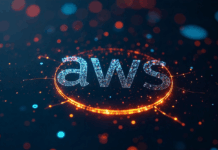Searching for illustrations that actually work feels like looking for parking in Manhattan – technically possible, usually frustrating. You spend hours browsing stock sites, bookmark twenty “maybes,” then end up using none of them because they’re wrong somehow. Icons8 pitched Ouch as the solution: editable illustrations that you can actually customize. After months of real project work, here’s what I’ve learned.
What’s Inside This Thing
Ouch breaks illustrations down into twenty-one visual styles, which seemed like marketing overkill at first. Turns out different projects really do need different approaches. Corporate minimalism works for enterprise software. Playful characters suit consumer mobile apps. Technical diagrams handle documentation without looking like kindergarten art. Each style maintains consistency, preventing that “assembled from random Pinterest boards” aesthetic.
The game-changer is how these illustrations actually work. Regular stock sites give you a finished image file – use it exactly as-is or find something else. Ouch constructs illustrations from separate, editable pieces. Characters stand apart from backgrounds. Objects exist on independent layers. Effects operate as separate elements. This means grabbing something 70% right and fixing the remaining 30% instead of endless searching.
File format support covers everything you’d expect without weird extras. SVG scales perfectly across devices – crucial when your design needs to work on phones and 4K monitors. PNG handles compatibility when SVG causes browser quirks. Animation formats include GIF for social posts, MOV for presentations, Lottie JSON for web apps. After Effects files accommodate motion design projects. Solid coverage without feature creep.
How Editing Really Works
The modular approach completely changes your illustration hunting strategy. Instead of seeking perfect unicorns that don’t exist, you find decent foundations and modify what doesn’t fit. Change character clothing styles. Replace background scenery. Completely redo color palettes. Rearrange elements within compositions. Each component works independently, so tweaking one part won’t accidentally break something else.
Mega Creator runs editing through your browser without requiring Creative Cloud subscriptions. Drag stuff to new positions. Pick different colors with standard tools. Make elements bigger or smaller. It’s not going to replace Illustrator for complex work, but handles most routine modifications without monthly software fees or training courses.
How Developers Actually Use It
Frontend teams integrate these into interfaces as functional elements, not just decoration. User onboarding flows need clear step-by-step visuals. Empty states require helpful graphics that don’t make users feel dumb. Error pages benefit from friendly imagery that doesn’t seem patronizing. Loading screens become less annoying with relevant animations.
Responsive behavior works smoothly because SVG scales naturally. Component structure adapts to different screen sizes through CSS manipulation. Pretty standard development approach with reliable results.
Business presentations and corporate communications frequently need professional document imagery. The paper clipart collection provides office-appropriate graphics including reports, contracts, and business documentation perfect for internal presentations and client-facing materials.
Marketing Team Struggles
Content marketing teams need visual consistency across blog posts, emails, social media, landing pages without hiring illustrators for every piece. Brand coherence matters more than perfect individual illustrations when building recognition over time.
Email campaigns hit specific technical walls. Heavy files trigger spam filters. Complex animations kill mobile loading speeds. Ouch’s SVG animations stay lightweight while adding visual interest without creating technical headaches. Brand color tweaks maintain consistency without starting over from scratch.
Developer Integration Reality
Getting assets happens through multiple channels depending on workflow. Desktop app lets you drag illustrations directly into Sketch, Figma, Photoshop, VS Code. API access supports automated workflows and dynamic content for bigger operations needing systematic management.
Git handles SVG files well since they’re XML underneath. Teams can collaborate on illustration edits through normal version control. Build processes automate optimization and format conversion without manual steps slowing things down.
Educational Use Cases
Schools and universities use these across learning platforms and course creation. Visual learning needs consistent styling throughout materials, presentations, quizzes, supplementary content. Education-focused collections address teaching requirements like concept breakdown and process explanation.
Universities extend this to research presentations, academic papers, conference materials, grant applications. Institutional branding works through color customization while keeping professional academic standards.
Small Business Budget Reality
Startups face brutal choices around visual content. Custom illustration costs more than most budgets allow. Free resources often look cheap enough to hurt credibility. Ouch’s pricing acknowledges this reality with options that make financial sense.
Free usage with attribution works for internal tools and prototype development. Twenty-four dollar monthly plans remove attribution while unlocking additional formats. This progression fits growth from bootstrap startup to funded company needing brand control.
Licensing Terms That Matter
Usage rules work for different organizational needs. Free tier requires attribution links – fine for internal stuff, problematic for client-facing products where brand control matters. Paid subscriptions eliminate attribution while providing better format access and faster support.
Educational institutions get discounted pricing. Team features include user access controls and usage tracking. Enterprise customers get white-label options and dedicated support for large implementations.
Measuring Real Results
Success gets measured through actual metrics, not aesthetic opinions. User comprehension improvements in interface flows, engagement increases on content pages, conversion optimization in marketing funnels, brand perception enhancement through user research, support ticket reduction through clearer visual communication.
Technical performance includes file size impact on loading speeds, browser compatibility issues, accessibility compliance. SVG implementations usually beat bitmap alternatives while providing better scalability and editing options.
Where It Breaks Down
Specialized industries hit major limitations. Medical documentation needs anatomical precision beyond general illustration scope. Industrial diagrams require specific technical accuracy. Scientific visualization demands exact representation that broad-market libraries can’t consistently deliver.
Attribution requirements create problems for white-label products or client work needing complete brand control. Free tier works for internal projects but fails in commercial applications where attribution conflicts with client branding needs.
Platform Development Status
Recent updates include AI-powered illustration generation, expanded animation support, better integration with Figma and Sketch. Development pace suggests ongoing investment rather than maintenance mode.
The broader Icons8 ecosystem includes icons, photos, audio, design tools. This integration simplifies vendor management and billing for organizations needing comprehensive digital asset solutions.
Bottom Line After Real Use
Icons8 Ouch handles illustration needs for most professional design work decently. The modular architecture, format variety, and flexible pricing solve common workflow problems. Specialized applications need custom solutions, but routine design work benefits from the systematic approach.
Component-based design fits modern development practices emphasizing modularity and brand consistency. Web developers, marketing teams, software engineers, educational staff, and budget-conscious organizations find practical value in this visual asset management approach.
Success requires honest evaluation of your specific needs against what the platform actually delivers. Teams that understand both strengths and limitations get better workflow efficiency and visual communication results than those expecting it to solve every problem.






